When I first moved to southern California from Montana to attend university, I was amazed by the diverse array of stunning plants: the pink sprays of bougainvillea, the purple flush of jacaranda trees, the orange-tufted, sharp-beaked birds of paradise.
It’s uncanny how much this flower resembles a tropical bird, isn’t it? Also known as crane flower, bird of paradise (Strelitzia spp.) belongs to the Strelitziaceae family, of which Madagascar’s theatrical traveler’s palm (Ravenala madagascariensis) is also a part.
This family loves drama, and it’s fantastic if you’re looking for stunning ornamentals to add to the garden.
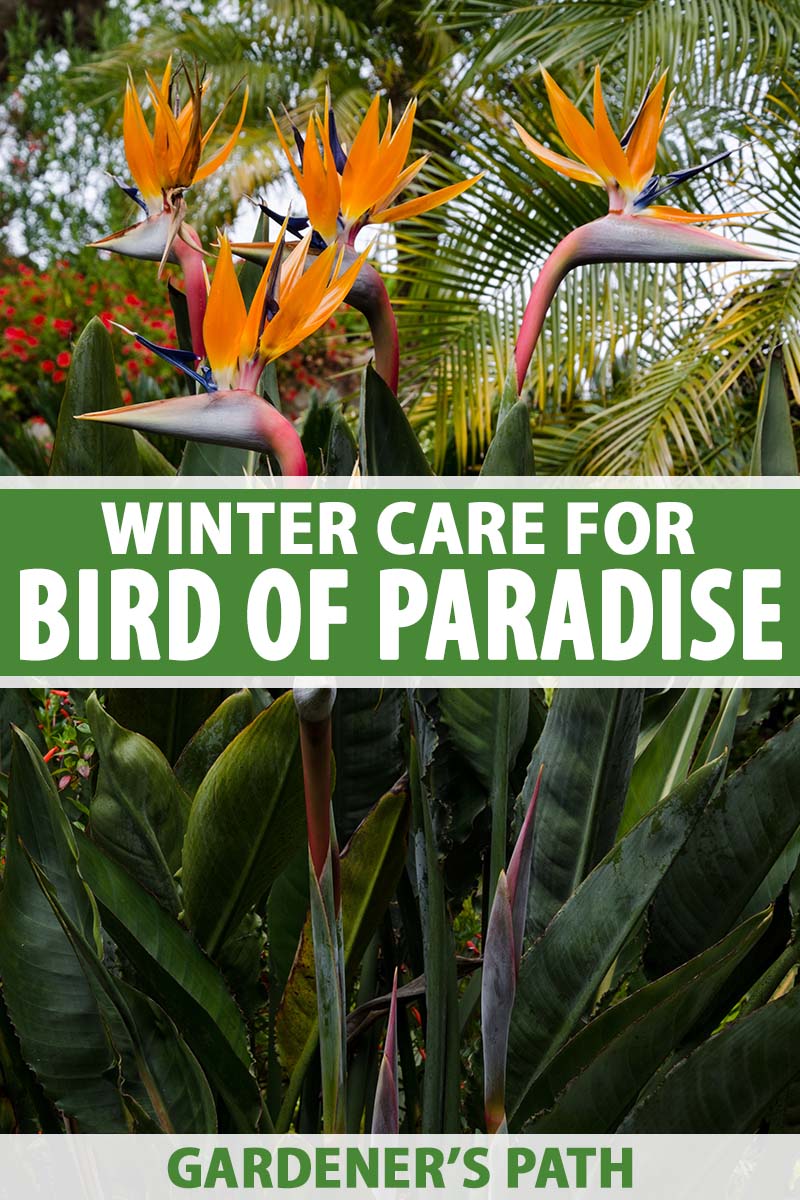
We link to vendors to help you find relevant products. If you buy from one of our links, we may earn a commission.
Bird of paradise is an evergreen tropical plant native to South Africa, but it’s grown in warm locales around the world. There are five species in this genus, and all may be referred to by the same common name.
All members thrive in USDA Hardiness Zones 10-12, and sometimes Zone 9 – with ample protection.
If you’re lucky enough to be growing one of these beauties in your yard or garden, you might be wondering how to best care for it during the winter.
We’ve got you covered. Here’s what I will cover in this guide:
What You’ll Learn
These plants can suffer if temperatures dip below freezing in the winter. Read on to find out how to overwinter your bird of paradise if you live in Zone 9, or are daring to grow the gorgeous birdlike blooms in Zone 8.
And if you’re looking for basic tips to get started, you can begin with our growing guide.
What Happens to Bird of Paradise Plants in Cold Weather?
The very lowest temperature that Strelitzia plants can handle is 24°F for just a short amount of time, according to Sydney Park Brown and Robert J. Black of the University of Florida Institute of Food and Agricultural Sciences (IFAS) Extension.
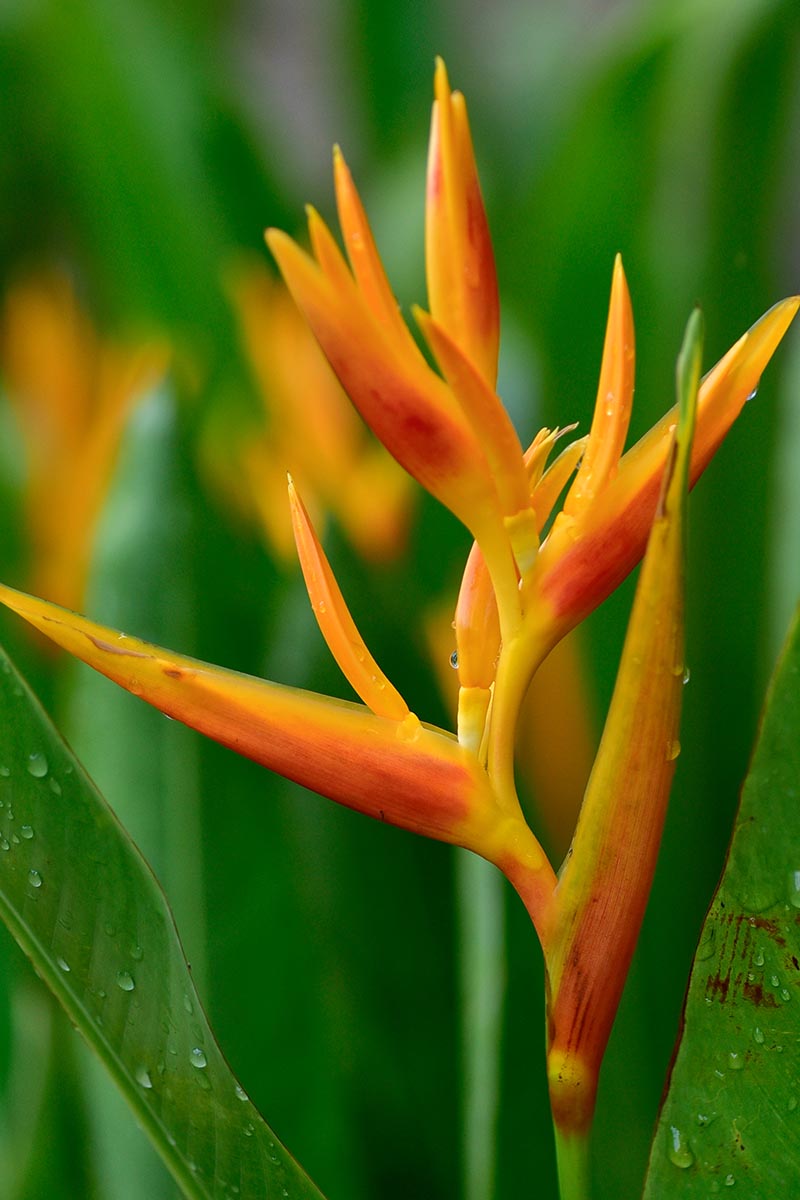
But that doesn’t mean they won’t pay a price for withstanding such a chilly dip in temperature. Any temperature below 32°F can injure flowers and developing buds.
Here’s what you can do to help keep your plant warm in the winter.
Plant It in a Container
If you live in Zones 8 or 9, consider planting your bird of paradise in a container the moment you bring it home from the nursery. If your plant is growing in a pot, it’s easy to move it indoors when you see a freeze warning in the forecast for your area.
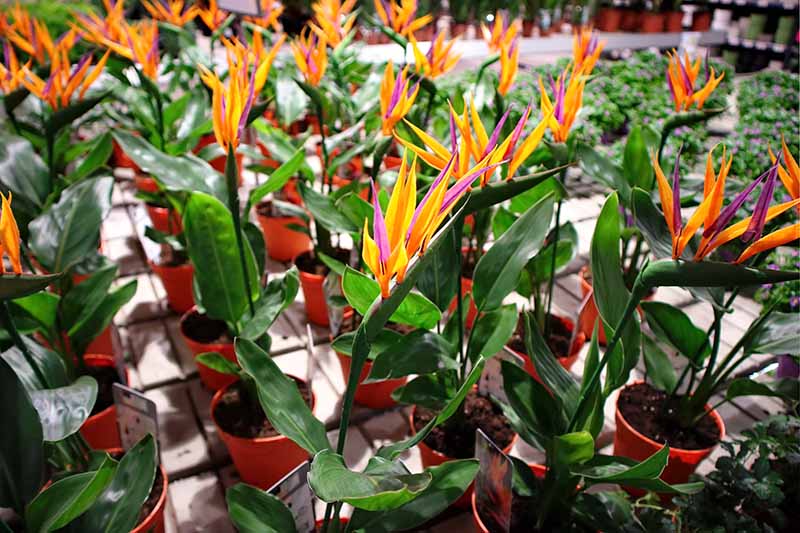
This generally works only for the smaller S. reginae. You’d have to have a mighty big container to house the treelike S. alba or S. nicolai.
S. reginae can grow up to six feet tall and three feet wide, so keep this in mind when you purchase a container. If your plant is still young and relatively small, you can repot it each spring as it grows.
Aim for a pot that’s at least 12 inches wide and deep for a smaller plant, and one that’s at least 34 inches deep and wide for a larger one. Ensure that it has good drainage, with a hole or several in the bottom of the pot.
Fill the container with two parts potting soil and one part perlite. Gently compress the nursery pot to loosen the edges of the plant. Grasp the stalk and carefully remove the plant, and place it directly into the waiting pot.
Brush some of the soil away from the root ball to loosen the roots. Tease apart the tuber-like roots so they fan out over the soil. Then, cover everything up and give it a deep watering that drains out the bottom of the pot.
Keep it next to your sunniest windowsill, and move it outside again as soon as the temperatures allow – the plant is more likely to produce an attractive profusion of flowers if it is grown outdoors.
Read more about growing birds of paradise as houseplants here.
Transplanting to a Container
Did you already put your bird of paradise in the ground, only to realize that it’s likely to suffer during the winter?
You can still transplant it to a container. Just fill a large pot – one that’s at least 12 inches wide and deep, or larger, depending on the size of the plant – with two parts potting soil and one part perlite.
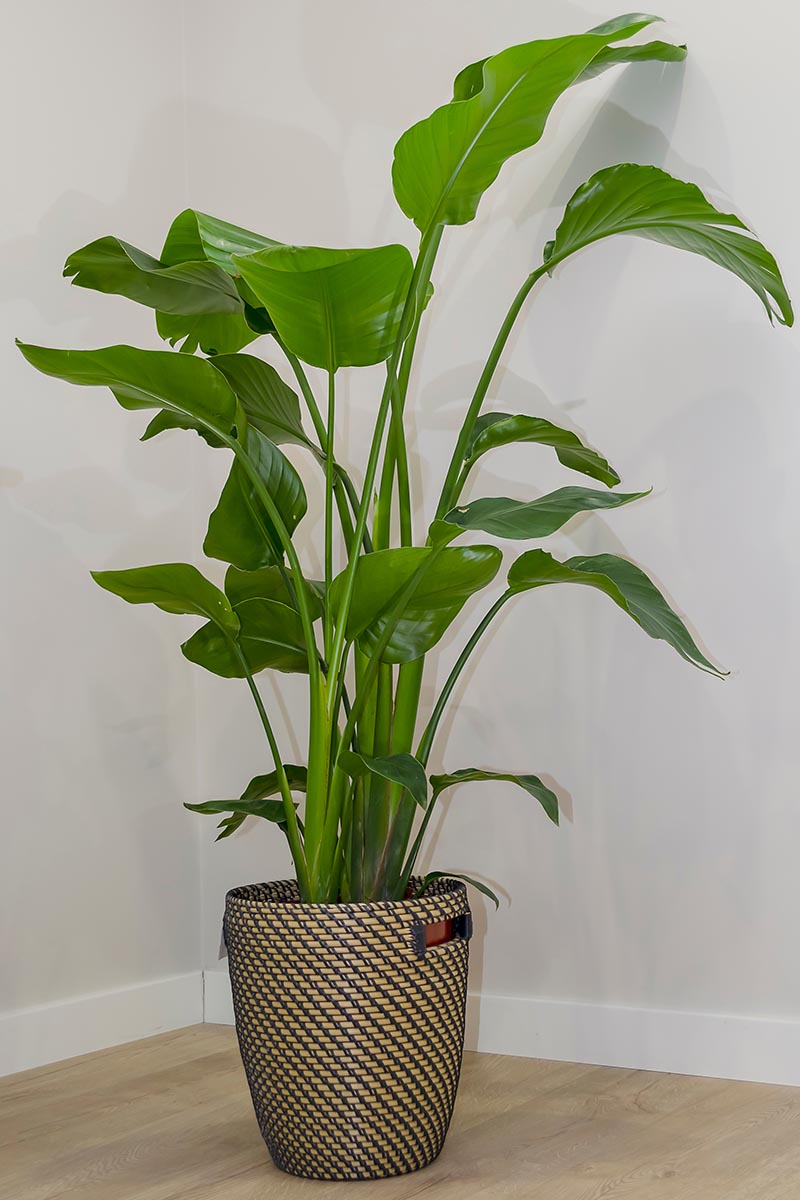
First, soak the root system with a running hose for about 10-15 minutes. Wait about 20 minutes after you finish watering it for the water to soften the roots. Then, mark a 10-inch radius around the plant.
Using a trenching shovel, dig down about 18 inches, following that radial line. You’ll probably need a friend to help you lift the heavy plant (and its root ball!).
Don’t worry too much about breaking pieces of root here and there – these plants are tough. A little too tough, perhaps…
Place the plant in the pot and fan out the roots. Backfill with soil and water thoroughly, until liquid drains out the bottom.
Now, you can bring your plant inside to shelter it during cold spells!
What If I Want My Plant to Stay in the Ground?
Maybe you live in Zone 10 or 11 and you’re not that worried about the winter. But you do want to know how you can keep your bird of paradise warm if, say, there’s a cold snap that’s too close to 32°F for comfort.
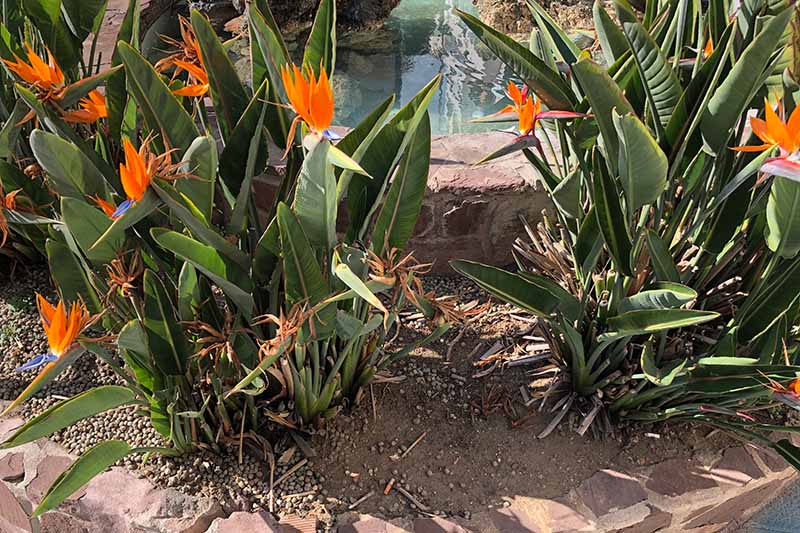
Or maybe you live in Zone 8 or 9 and have planted a giant S. nicolai or S. alba that you can’t just pot up and bring inside.
How can you keep it warm?
You cut it down.
But not like that. As you would if you were overwintering the closely related banana plant, you need to cut the stem and leaves down to just 12 inches above the ground.
Next, cover the entire stem and rhizome area with mulch. Start with nice, chunky bark mulch spread over the rhizome area, and then add leaves and straw to finish off the thick layer of warmth your precious Strelitzia will need in order to survive the winter.
Cover the heap of mulch with breathable row cover material and stake it down. Voila! Your plant will stay warm through the winter, and as soon as warmer temperatures arrive, you can free it of its little nest and let it regrow those lovely stems and leaves.
An Important Note About Water
Make sure you continue watering your plant through the winter, unless you experience an actual freeze.

You don’t need to keep the soil moist like you do in the spring and summer. Instead, allow the soil to dry out in between watering sessions during the winter.
When you see that the surface soil is dry, wait a day or two, and then water again.
A Fountain of Youth
With proper wintertime care, your bird of paradise beauties will thrive for years.
I bet the blooms that graced the sidewalk borders at my alma mater when they first wowed me ten years ago are still thriving to this day, because the gardeners there are absolutely excellent.
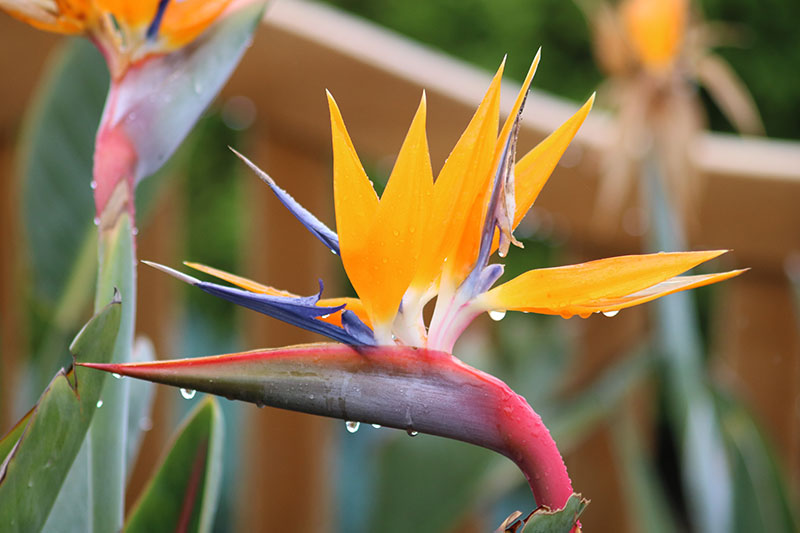
And so are you! If you have any stories, tips, or questions about overwintering Strelitzia plants, drop me a line in the comments below.
In the meantime, check out these guides on growing and caring for birds of paradise plants next:
- What Are the Different Types of Bird of Paradise Plants?
- How to Prevent and Treat Common Bird of Paradise Diseases
- How and When to Prune Bird of Paradise Plants
© Ask the Experts, LLC. ALL RIGHTS RESERVED. See our TOS for more details. Uncredited photos: Shutterstock.
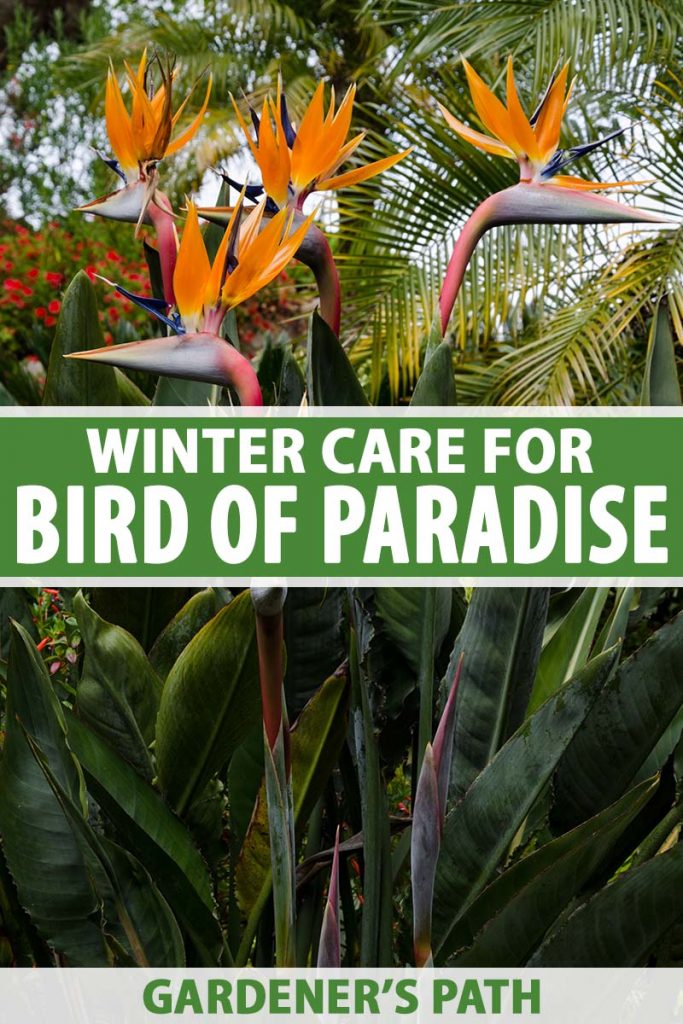

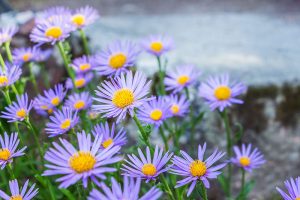
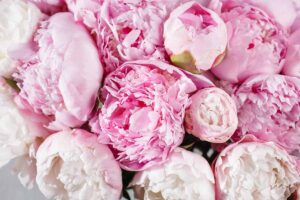
My bird was hit by frost and all leaves are brown but stalks are green. Can I cut the plant back now or wait till spring? How far back should I cut back if need be?
How long ago did the frost hit? Give the plant about a week to show all the damage. If at the end of that week, it’s just the leaves that are brown, go ahead and trim them all off. You can also trim the stalk all the way down to the ground if you’d like to. The most important thing is to protect the underground rhizomes, so get some straw on top of those ASAP. If you do cut the plant down to the ground, it’ll regrow in spring. Hope this helps!
Can a bird of paradise blossom indoors? I just bought one as an indoor plant since I live in Virginia.
It can, under the right conditions! See our guide to indoor growing for tips.
I bought my bird via Amazon. Should I repot it?
If it’s still in the nursery pot that it came in, and/or a decorative cachepot without drainage, newly purchase plants should be repotted.
I live in Michigan, Zone 6. I put my container bird of paradise out all summer. It grew HUGE! Now it’s time to come indoors for the winter but it’s too big. How do I make it half the size?
You can definitely prune it to the desired size — it should survive a heavy pruning and can even be cut back to five inches above the soil line, although that wouldn’t be very pretty!
I have my bird of paradise in a pot in the summertime so I put it up in my little house outside so that it wouldn’t freeze the blooms are still there but the leaves are all curling up and some has a little white dots on it could you tell me what to do I name
Hi Sandra! Can you provide a photo? Also, what growing zone are you in?
My indoor bird of paradise just bloomed today, and another one soon.
That’s wonderful! Would love to see photos if you have any ????
MY BIRD OF PARADISE IS IN A FAIRLY WARM KITCHEN IN POTS.THE LEAVES AND STEMS ARE DROOPING SHOULD I WATER IT?
Hi Jill, firstly check if the surface of the soil is dry – if so then it should be watered. If you’d like to share a picture we can take a look and advise you further.
Hey, I live in zone 6. Have an indoor container grown Bird of Paradise. It’s been growing for about 15 years. The problem I have is the middle growth is bumpy & black. Looks like it’s dying/ rotting. I let the soil dry out, so it’s not overly wet. There’s a 2 week old set of leaves growing on the outside of stalk. The tips are black seems to be chewed on.
Hi Wendy, could you upload a picture so we can take a look? If you click the paperclip icon on the bottom right of the comments box you can attach a photo. Thanks!
Hi Laura. I live in Vancouver WA, zone 8. I have a potted BoP that I have been hauling back and forth to So. Cal in the winter, but I am growing a bit weary of that. I am wondering, if I put it in the ground and built/bought a plastic tent with a heating element in it to keep it at 40deg. would that get it through the winter? We usually have 2 or 3 spells of cold weather for a week, but the rest of the winter is overcast and raining with lows in the high 30’s and… Read more »
Hello, Randy! Ah, the things we do for love. I’m glad to hear that your BoP is thriving after all these years and all those trips to Southern California. Instead of a tent, I feel like you might be better off with the guide’s directions for Zone 8 and 9: Or maybe you live in Zone 8 or 9 and have planted a giant S. nicolai or S. alba that you can’t just pot up and bring inside.How can you keep it warm?You cut it down.But not like that. As you would if you were overwintering the closely related banana plant, you need to cut… Read more »
I live in Vancouver BC, zone 7B – turning into zone 8 with climate change – and I grew several BOP from seed a decade ago. With the exception of 1 that was destroyed by a racoon they are thriving. I bring them into my garage/greenhouse each Fall This Fall I cut off all the curled or otherwise bad looking leaves and everything looked fine.But some of the leaves on all of them seem to have become rather silvery since I moved them indoors. The plants look fine otherwise. The temperature has not fallen below 50 C and I don’t… Read more »